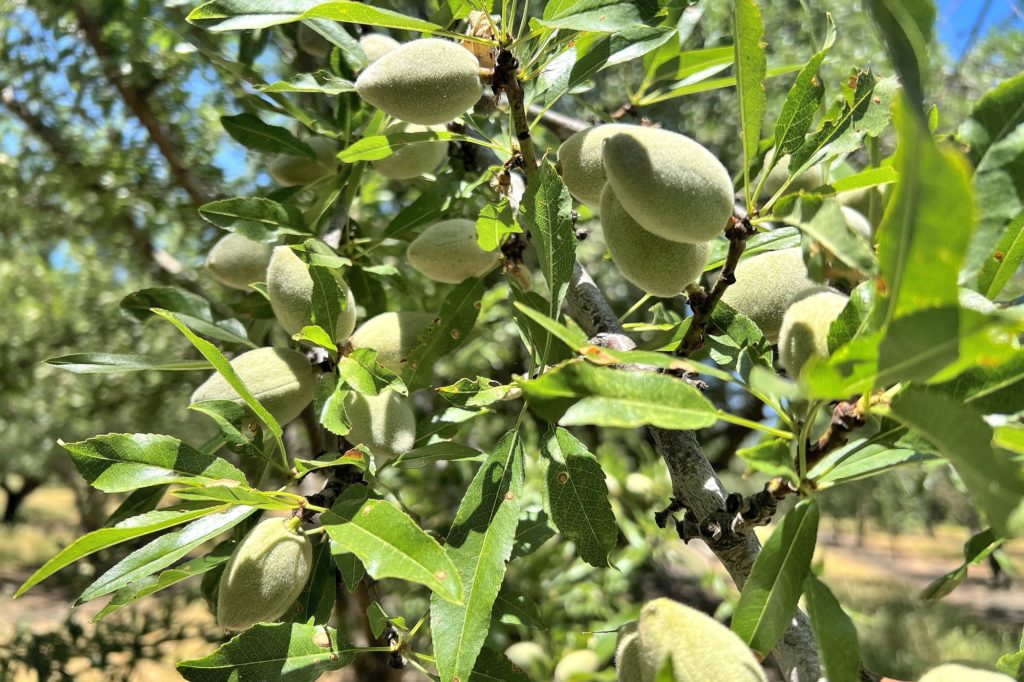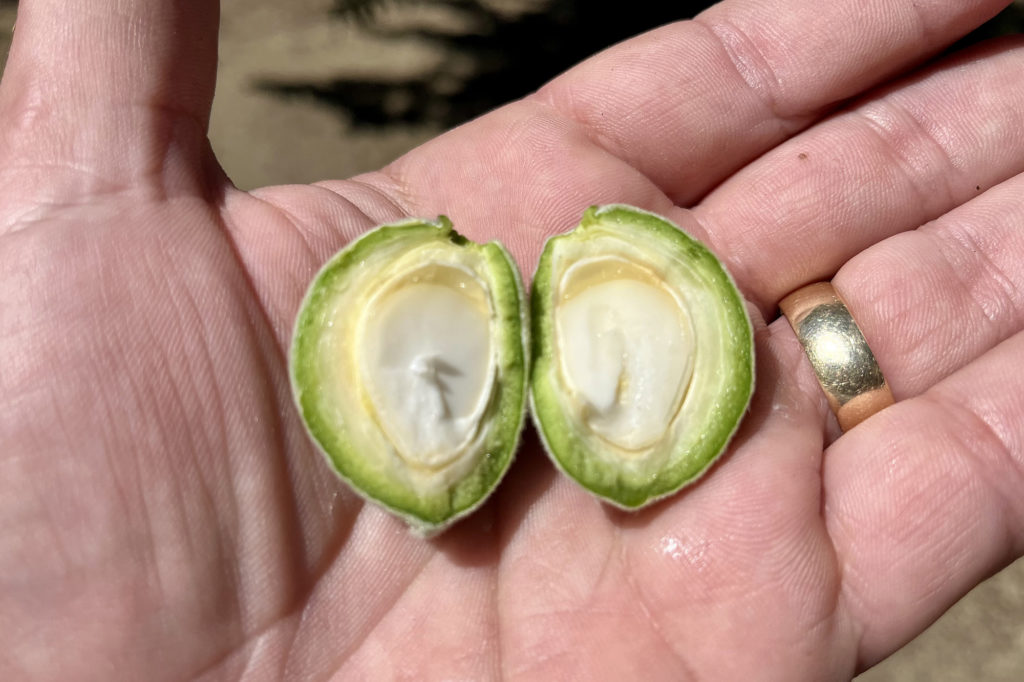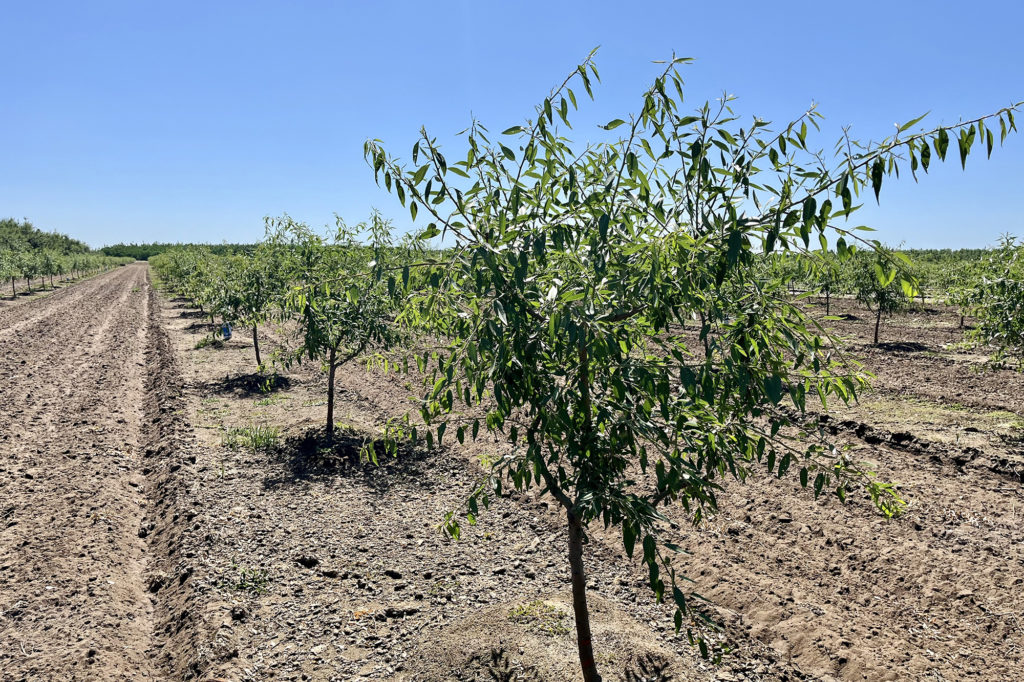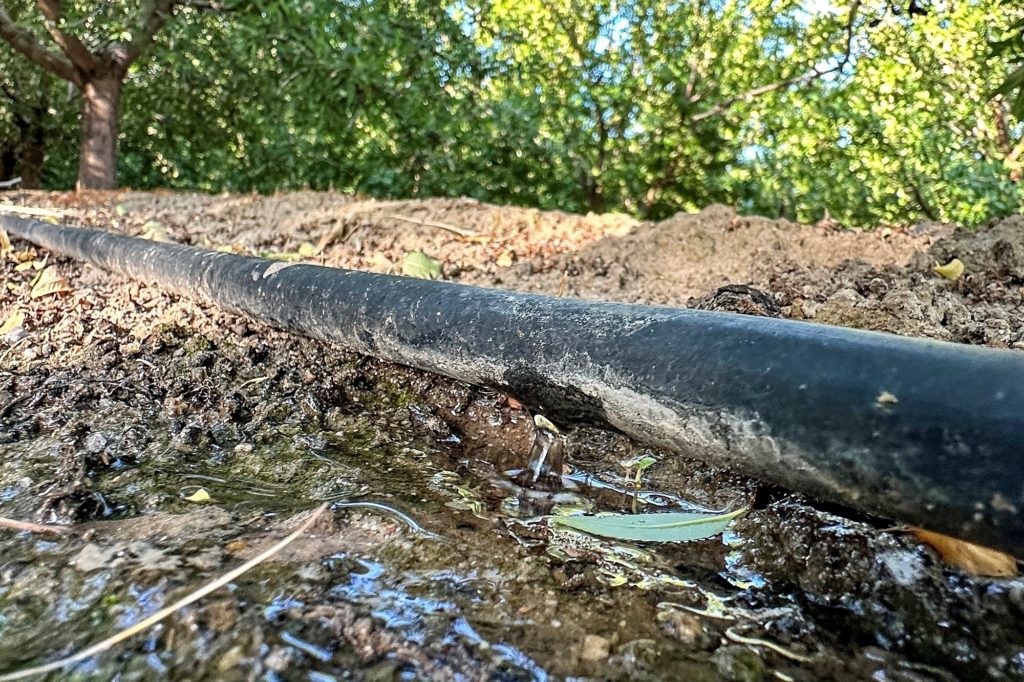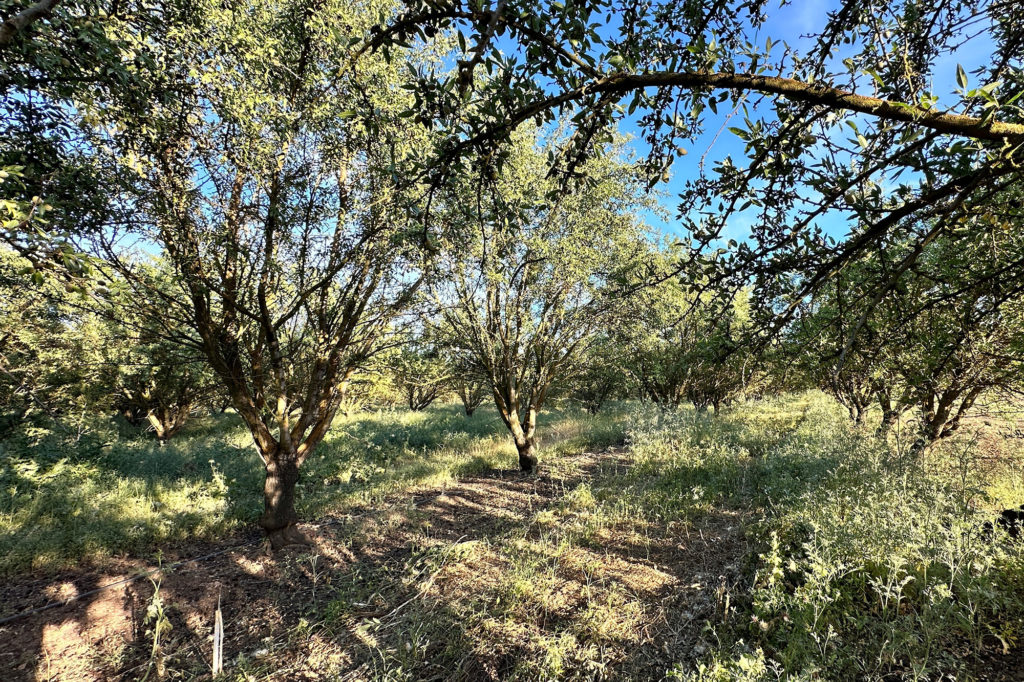
This report covers the conditions and activities observed from Monday, April 29, 2024, through Sunday, June 2, 2024. The next scheduled report will be posted on Monday, July 1, 2024. In the event of any significant occurrences prior to that date, this site will be updated as soon as possible.
Mild temperatures and breezy skies dominated weather across the Central Valley during May. Following one last spring-time storm during the first week of the period that dropped from a few hundredths, to as much as an inch of rain, dry skies have reigned over the orchards. Persistent breezy conditions, with winds ranging from 10 to 20 mph blew through the valley on most days during the period, complicating some orchard activities. Other than during the passage of the previously noted storm system, which dropped temperatures into the upper 50’s and lower 60’s, daily maximum temperatures were widely reported in the 80’s with only brief excursions into the low and mid 90’s. Morning lows were widely reported in the 50’s, dipping into the upper 40’s on the chilliest mornings early in the period and just reaching into the 60’s in the latter half of the month.
With the solidification of the kernels, observers are reporting that the 2024 crop is now at its maximum weight. The comparatively mild temperatures experienced during the month have minimized stress on the trees and provided good support for the developing crop. Noting the observance of first nuts to reach full solidification, it appears that the crop is running well ahead of last year.
Irrigation, fertilization, orchard floor maintenance and pest management were prime activities during the period. These activities will also continue into coming weeks. While the temperatures during the period failed to provide significant challenges, the winds that blew on most days were less sympathetic. Brisk winds and low humidity can also increase water consumption, requiring growers to increase irrigation frequency. The winds also complicated efforts to control vegetation within the orchards. While weed growth within the orchard “middles,” the area between the tree rows, can be controlled my mowing, treatments to control weeds within the tree row can only be completed during calm periods with little to no wind. Growers have noted that the winds limited the days they were able to complete treatments and many orchards remain fairly “fuzzy” with excessive vegetation.
Applications of nitrogen fertilizers are normally completed during May. Nutrient demand is reduced now that the kernels are fully solid, and observers are reporting that most growers were making their last nitrogen application in the final days of the period.
As shown in the photo accompanying this report, observers in all areas are reporting the presence of plant bug species in the orchards. Feeding by Leaf-Footed Plant Bugs and Stink Bugs prior to solidification can kill the almond and cause it to drop to the ground. After solidification and shell hardening, feeding causes Brown Spot, which renders the almond inedible.
Pest Control Advisors have noted significant catches of Navel Orange Worm (NOW) moths in traps placed within the orchards. Given the presence of mummy nuts in many orchards, this is not unexpected. Treatments to control eggs and newly hatched larvae on these mummy nuts were completed early in the period in an effort to reduce the potential population during the upcoming hull split. Mating disruption, described in last month’s report is also designed to reduce the population within the orchard. As in 2023, neighborhood influences on NOW populations are a significant consideration. Observers in all areas are reporting abandoned orchards and orchards receiving minimal care. Given that NOW adults are strong fliers, capable a traveling far from their point of origin, these orchards serve as a haven for NOW and a source for infestation of neighboring orchards.
In the coming weeks, growers and Pest Control Advisors will be monitoring orchards for signs of the hull split, the point of greatest susceptibility to NOW. Blank nuts, those where the kernel failed to form typically split ahead of the “sound” nuts. These may be observed at the tops of the trees and along the edge rows of the orchard. The appearance of blanks splitting is the first indication of the upcoming split and the signal to prepare of any treatments required to control the insect.
By Mel Machado, Vice President of Member Relations
Photos By: KC Clendenin, Austin Jackson, and Mel Machado


